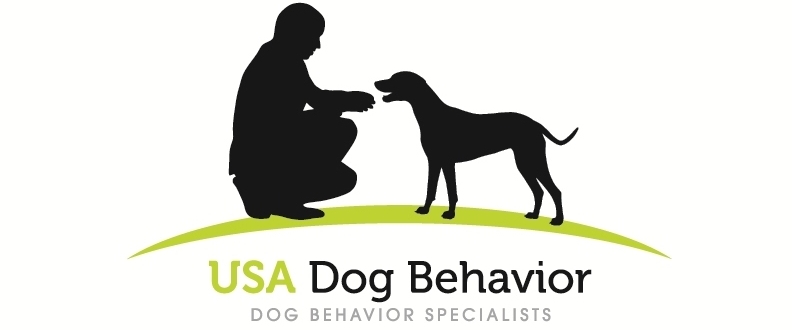Dog Front-Door Aggression, Myths and Facts
Is this your dog at the front door?
©Scott Sheaffer, CBCC-KA, CDBC, CPDT-KA, USA Dog Behavior, LLC
“Treatment of territorial aggression is different than treatment of other forms of dog aggression.”
Almost every dog barks a little when someone rings the doorbell or knocks on the front door. My personal dogs usually give about three half-hearted barks and then immediately settle down; this is normal for most dogs and is usually nothing more than arousal. This article is not about normal front-door dog behavior. It’s about dogs with territorial aggression that typically exhibit the following when someone knocks or rings the doorbell.
They are extremely reactive to the doorbell or knocking.
Their barking intensity is extreme.
They keep a distance from the stranger entering your home.
They watch the stranger like a hawk.
They don’t seem to like it if the stranger gives them attention of any kind.
Movement and noise from the stranger make things worse.
Myths About Territorial Aggression
Territorial aggression has myths associated with it. Let me dispel a few of those for you.
I don’t care what kind of dog you have; the motivation for territorial aggression is fear. Your dog is afraid of strangers coming into your home and wants them to stay away or leave as soon as possible if they do come in. Dogs with territorial aggression are not confident dogs in this context; they are fearful.
They are not protecting you, your home, your family, your property or anything else in or near your home. They are protecting themselves. Research was done with dogs that had territorial aggression where those conducting the study left the front door open after a test stranger entered the owners’ homes. When these test strangers came into the dog owners’ homes, most of the dogs quickly scooted out the front door to get away from the test stranger. They were obviously only worried about one thing - themselves.
What causes territorial aggression?
There are four primary reasons why dogs exhibit this behavior.
They usually exhibit some level of fear of unfamiliar humans (i.e., strangers) outside of their territory that is substantially heightened when they encounter a stranger in their territory. In most cases, these dogs are only comfortable with three to five different people they know well when in their territory. This number includes owners’ family members.
They have an expectation of safety in their territory. This is their home where they are comfortably living with people they have come to know and trust. When strangers enter, they feel violated.
The sudden appearance of the stranger at the door, including negative conditioning to the doorbell or door knocking sounds over time, causes an immediate and intense spike in their arousal and fear. This is only made worse by a surge of adrenalin that accompanies the fear response.
These dog need distance from the strangers entering their home in order to feel safe. Dogs with territorial aggression know when someone comes into their home, there is no escape. They are trapped in the home with the unwanted stranger.
Territorial fear does not always result in aggression.
In my experience, about 90 - 95% of dogs use aggression in an attempt to control the scary human coming into their territory. The other 5 - 10% of dogs use avoidance to keep a safe distance from the stranger. This is seen when dogs bark initially when someone is at the front door and then, for example, quickly hide under a piece of furniture, run to a back bedroom or hide in their crate.
The motivation for this avoidant behavior is exactly the same as for dogs that use aggression.
Treatment of Territorial Aggression
This type of aggression, especially in larger dogs, can be quite dangerous and typically escalates over time. I’ve observed that a significant number of serious dog bites involving my clients’ dogs are attributable to territorial aggression.
Testing for territorial aggression has to be done properly by a certified behavior consultant who understands this behavior. It cannot be properly tested or treated in a place dogs don’t consider to be their territory. It is not uncommon for dogs to have multiple territories (e.g., dog day care, friends’ homes, family members’ homes, etc.) and exhibit the same fear behavior in each.
Treatment of territorial aggression is different than treatment of other forms of dog aggression. The main differentiator is the treatment must include the territorial aspect of the behavior and therefore must include dogs’ territories in the treatment plan.
If your dog is showing signs of territorial aggression, please seek the help of a qualified dog behavior consultant.

